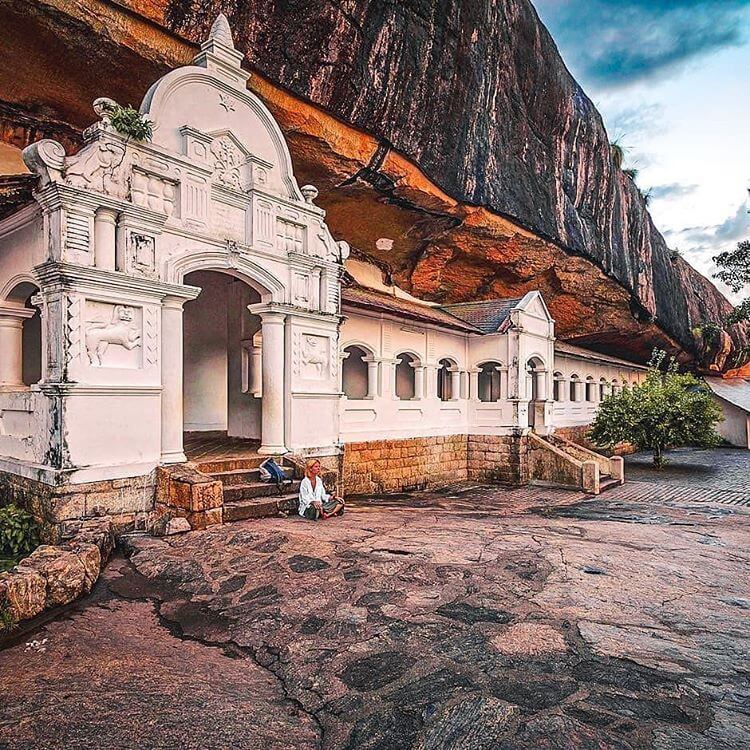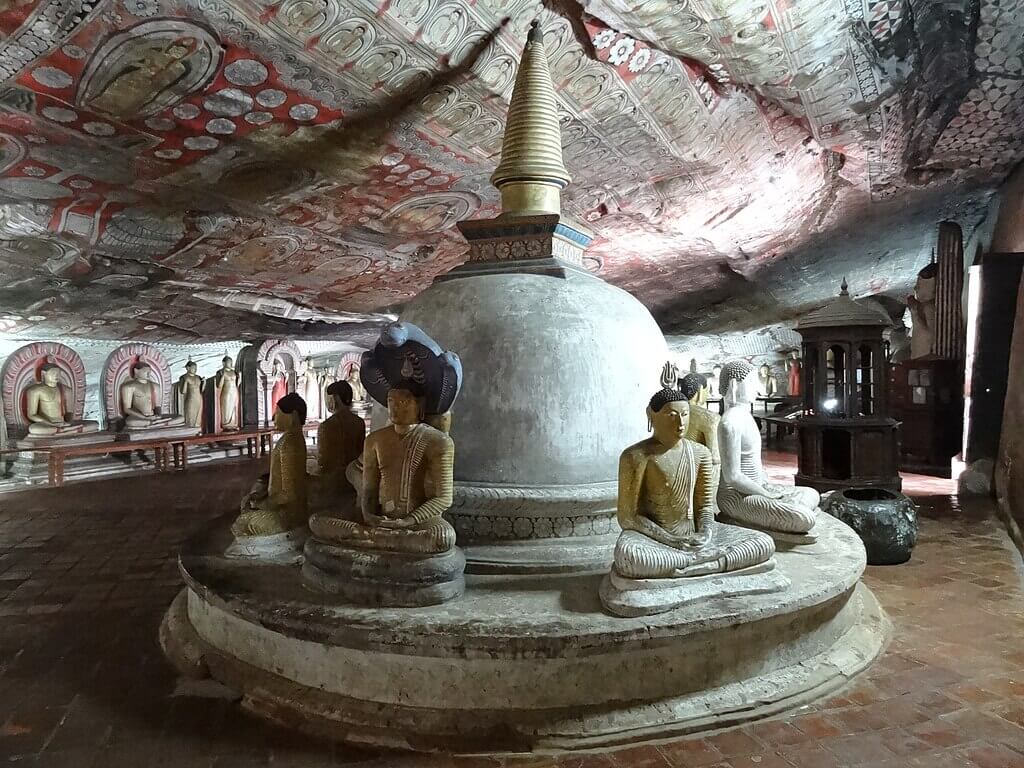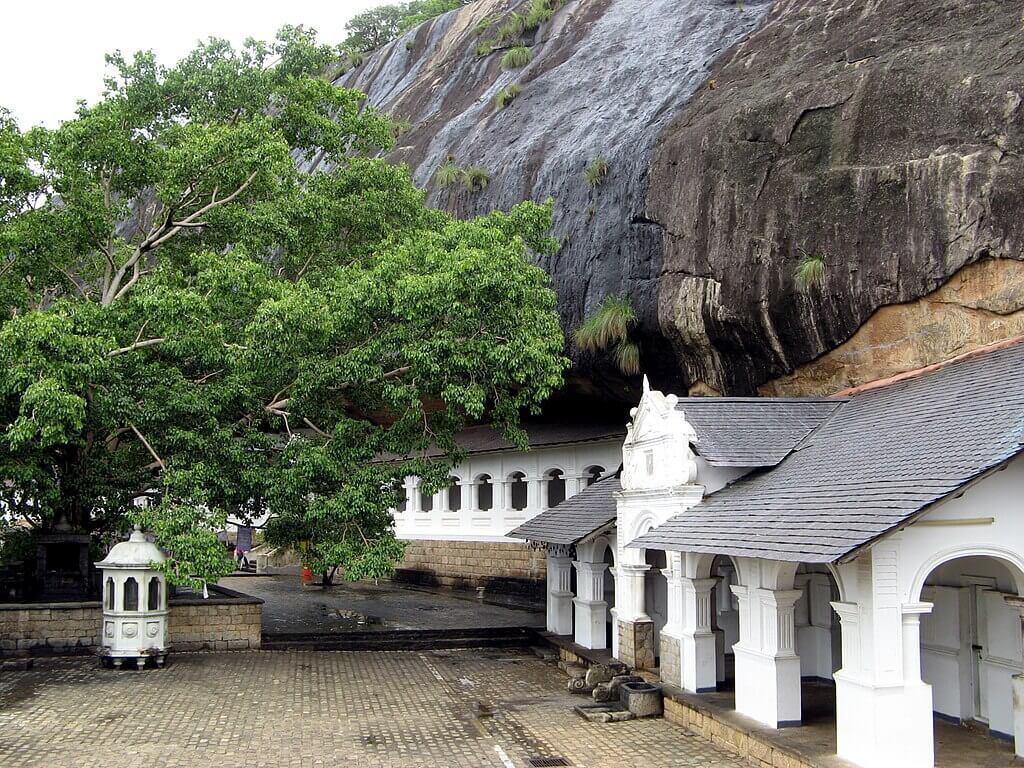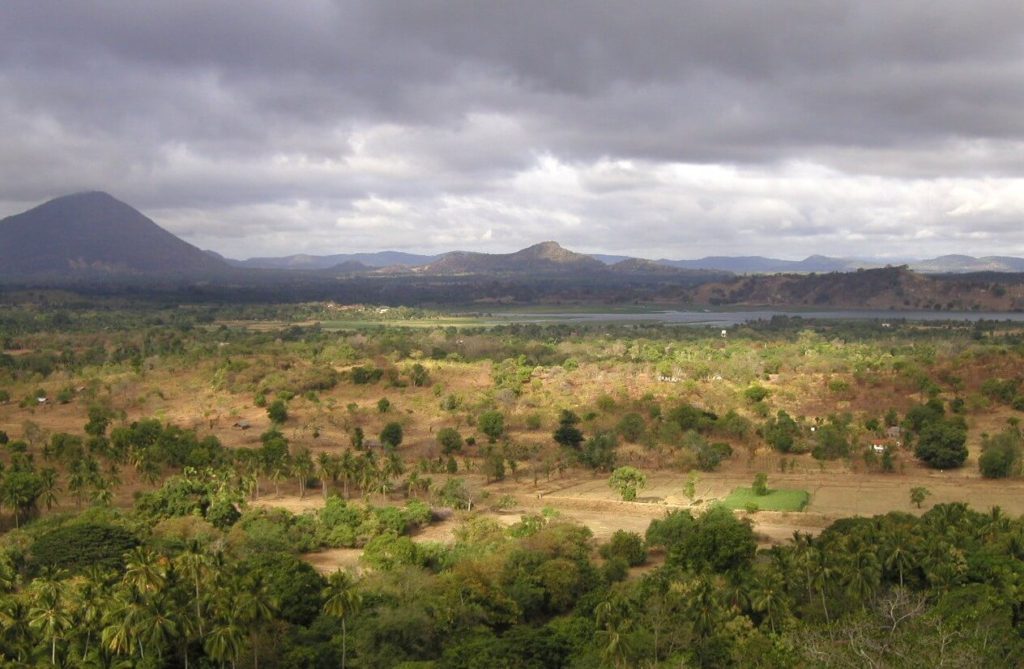Dambulla Cave Temple: A Guide to Sri Lanka’s Stone Storybook

Dambulla cave temple” by Leelack619, via Wikimedia Commons — CC BY-SA 4.0.
Why Climb That Rock?
Imagine climbing a giant, grey rock under the warm Sri Lankan sun. You’re following in the footsteps of kings and pilgrims from thousands of years ago. At the top, you don’t just find a view (though the view is incredible). You find an entrance.
You slip off your shoes, and the cool, smooth stone of a cave floor welcomes you. Your eyes adjust to the dim light, and suddenly, you see them: hundreds of statues, sitting, standing, and lying down, all bathed in a peaceful silence. The ceilings aren’t rock; they’re a breathtaking carpet of colourful paintings.
This is the Dambulla Cave Temple (also known as the Golden Temple of Dambulla). It’s not a dusty ruin. It’s a living, breathing UNESCO World Heritage Site, a place of worship for over 2,000 years, and a time capsule of Sri Lankan art and history. For anyone who loves history, this isn’t just a stop; it’s the main event.
The Travel Guide
A King’s Hidden Refuge: The Story of Dambulla
To understand Dambulla, you need to know the story of King Valagamba. In the 1st century BC, he was driven from his throne in Anuradhapura by invaders. For 14 long years, he was a king in exile, and where did he hide? Right here, in these very caves, protected by monks.
When he finally won back his kingdom, he didn’t forget his sanctuary. As a magnificent “thank you,” he transformed the caves from a simple shelter into a stunning rock temple. What you see today is his legacy, added to and lovingly restored by centuries of later kings, especially those from Polonnaruwa and Kandy. You’re literally walking through different chapters of Sri Lankan art history.

Best Time to Visit
Dambulla is in Sri Lanka’s “Dry Zone,” so it’s a good destination most of the year.
- Peak Season (December – April): This is the best time. The weather is dry, sunny, and the skies are clear. It’s perfect for climbing the rock and seeing the views.
- Shoulder Season (May – September): It gets hotter and more humid, with a chance of quick, strong showers, but still very visitable.
- Rainy Season (October – November): This is the main monsoon. It can be rainy and overcast, making the climb slippery.
Pro-Tip: Go early in the morning (around 7:30 AM) or late in the afternoon (around 4:00 PM). The midday sun makes the stone steps very hot, and the crowds are thickest. The morning light is soft, and the afternoon “golden hour” makes the view magical.
What to See & Do: A Walk Through History
The site is in two parts: the modern, slightly flashy Golden Temple at the bottom (with the giant golden Buddha and museum) and the historic Cave Temples at the top, which are the real treasure.
- The Climb: It’s about 160 meters (525 ft) up via a series of stone steps. It’s not a difficult hike, but take your time. You’ll be joined by cheeky monkeys (hold onto your snacks!) and vendors selling lotus flowers for offerings.
- The Five Caves: This is the heart of the site. You’ll buy your ticket and enter the main terrace.
- Cave 1 (Devaraja Viharaya): “Cave of the Divine King.” This cave is dominated by a 14-meter-long reclining Buddha, carved from the rock itself, depicting his passing.
- Cave 2 (Maharaja Viharaya): “Cave of the Great Kings.” This is the largest and most spectacular cave. It’s filled with over 150 statues of Buddhas, deities, and the kings who honored this site, including King Valagamba himself. Look up! The ceiling paintings are incredible, telling stories from Buddha’s life.
- Cave 3 (Maha Aluth Viharaya): “Great New Monastery.” This “new” cave from the 18th century shows the vibrant style of the Kandyan kingdom. It has a beautiful reclining Buddha and dozens of other figures.
- Caves 4 & 5: These are smaller but have a more intimate, ancient feel.

Getting Around
Dambulla is a major crossroads town, making it very easy to get to.
- By Bus: This is the easiest and cheapest way. Buses run constantly from Kandy (about 2-3 hours), Sigiriya (30-45 mins), and Colombo (4-5 hours).
- By Tuk-Tuk: From nearby hubs like Sigiriya or Habarana, a tuk-tuk is a great, breezy option. You can easily hire one for a half-day to see Dambulla and maybe another nearby site.
- On-Site: The only way is on your own two feet!
Essential Travel Tips
- Dress Code is Strict: This is a sacred site. Both men and women must cover their shoulders and knees. A sarong or scarf is perfect to wrap around your waist or drape over your shoulders. They are usually available for rent at the entrance, but it’s easier to bring your own.
- No Shoes Allowed: You must remove your shoes and hats before entering the cave terrace. There’s a shoe-minding stall for a small fee.
- Bring Socks! This is the best travel hack for Dambulla. The rock terrace gets unbelievably hot in the sun. Walking from cave to cave in your bare feet can be painful. A pair of socks will save your feet!
- Respect the Culture: Be quiet and respectful inside the caves. It’s fine to take photos, but it’s considered very disrespectful to take a “selfie” with your back turned to a Buddha statue.
- Water: Bring it. The climb is thirsty work. Just make sure to keep it hidden from the monkeys.

Your Chapter in a 2,000-Year-Old Story
Dambulla isn’t just a place you “see”; it’s a place you feel. When you stand in that cool, quiet darkness, looking at statues carved by artists who lived centuries before your country might have even existed, you feel a powerful connection to the past.
You’re standing in the same spot where a king found refuge, where monks have chanted for millennia, and where artists painted their devotion onto the rock. It’s a true journey back in time. Use this guide to plan your visit, and get ready to walk through one of history’s most beautiful and living storybooks.